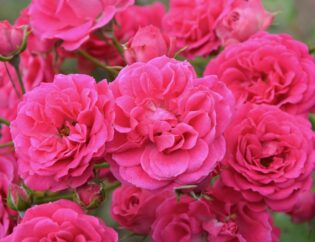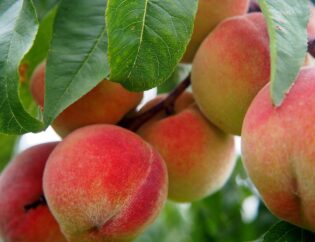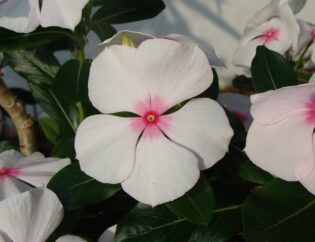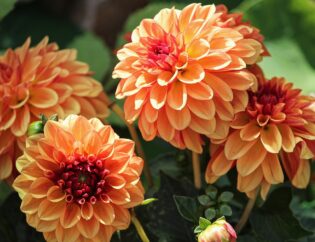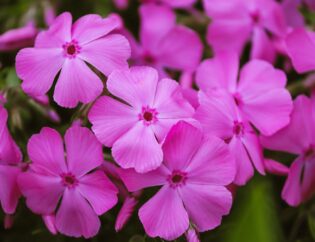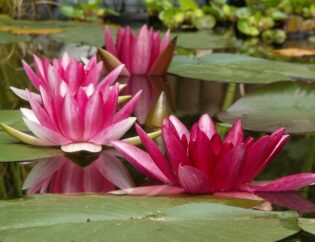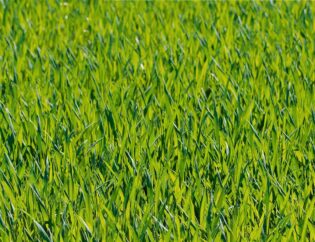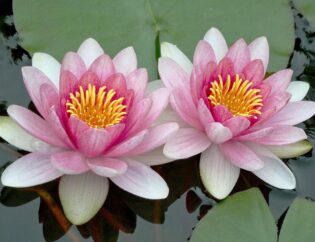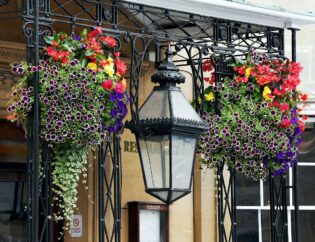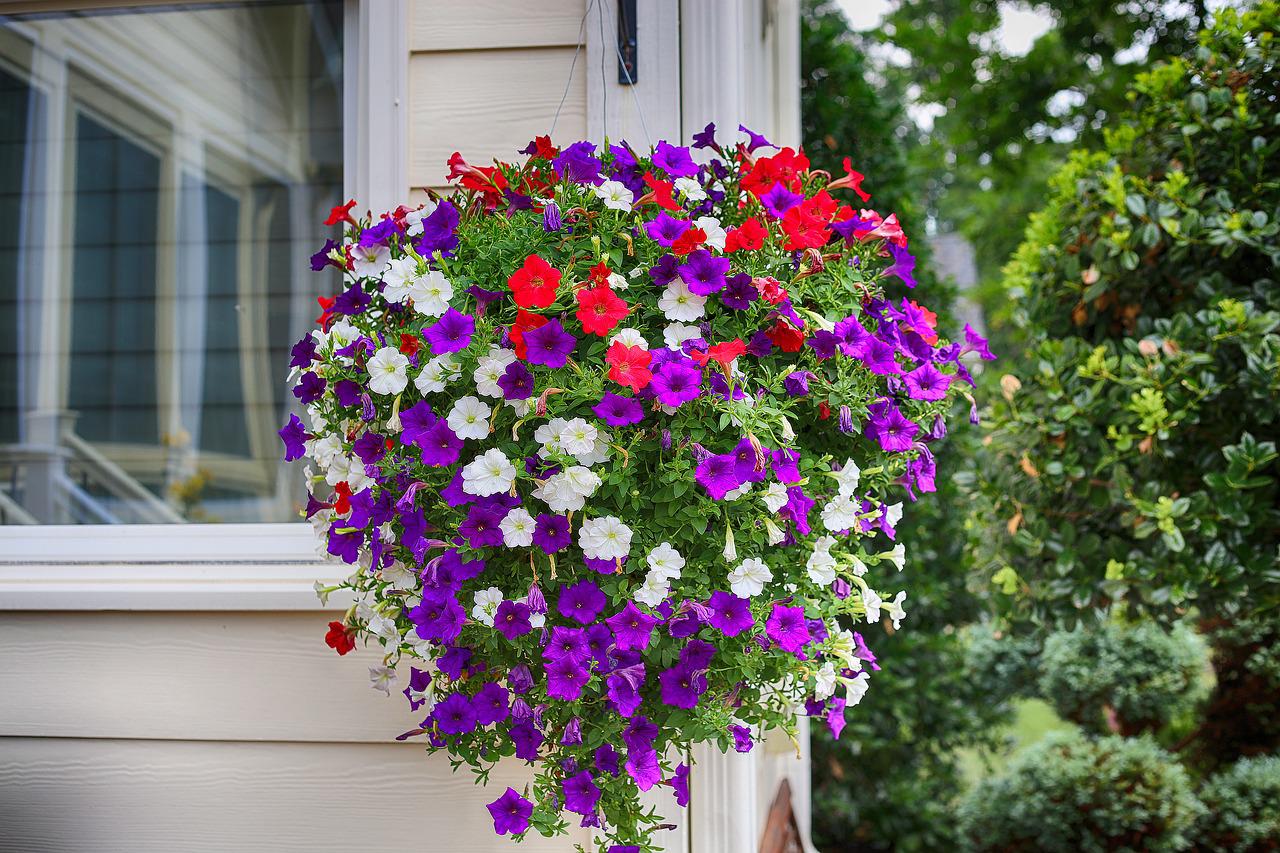
Pretty petunias are the perfect addition to any Atlanta garden. Cascading petunias are even better because they are simple to care for with a delightfully elegant presentation.
Check out what every Georgia homeowner needs to know about cascading petunias right here!
Why Are Petunias So Popular?
Petunias are impressive flowers that come in a variety of colors including purple, pink, red, and white. Furthermore, there are several options with unique foliage colors as well.
Aside from the incredible variety of colors, the blooms grow densely and last for a long time. They are also an easy care plant suitable for beginners. In most of the US, they are grown as annuals but in zones 9 and 10, they can survive the milder winters as perennials. (Take a look at this article for Georgia perennial advice).
What Types Are Available?
There are 35 known species of petunias. Though there is some variation, they all sport colorful, trumpet-shaped flowers good for attracting pollinating insects and hummingbirds.
These varieties can be loosely classified into the following 5 categories.
Grandiflora Petunias
As the name suggests, grandiflora petunias sport large, showy blooms about 3-5 inches across. Grandifloras have fewer flower heads than other types, but the large, colorful blooms more than make up for it. These are available as cascading petunias as well as dwarf cultivars.
Multiflora Petunias
Multifloras produce lots of smaller petunia blooms measuring about 2 inches across. The flowers may be single or double and there is a wider variety of colors. Many multiflora varieties do not require deadheading (cutting away spent flowers to encourage the plant to bloom again) making them ideal for mass plantings.
Trailing Petunias
Trailing petunias are grown both as ground cover and as cascading petunias. They are fantastic as ground cover, but also look lovely arranged spilling over a hanging basket. Used as cascading petunias, they grow well and fill out to hide their container, giving the planter natural appeal. They grow quickly outwards and a single plant can spread 10 square feet in a single season, while only reaching 4 -6 inches tall.
Milliflora Petunias
Millifloras are a more recent addition to the petunia family with diminutive blooms only 1 – 1 ½ inches across. The flowers grow thickly on the plant and last most of the season. The bright colors of these little beauties put on quite a show, and like trailing petunias, can be used as cascading petunias in a hanging basket.
Floribunda Petunias
Floribundas are a cross between grandifloras and multifloras and sport lots of large blooms. Some are spreading varieties, which work well as an impressive array of cascading petunias. Mixing types and leaf textures will create a planter with visual interest.
What Colors Are Available?
Part of the petunia’s popularity is the sheer variety of colors that are available. They come in red, purple, pink, and white, but it isn’t that simplistic. Petunias also come in a huge variety of different shades from deep, dark purple, to pastel pink, to bright red.
Plus, many of them are bicolor, and have a striped appearance with two colors, such as red and white or purple and white. Dark petunias with small white spots have the appearance of a starry night sky. And other petunias have darker centers with a light shade around the edge.
How Do You Get Petunias to Cascade?
Getting petunias to cascade is a cinch. Simply choose varieties that trail and plant them in a hanging basket. Petunias (like most plants) will rot in soggy conditions so be sure to use potting soil with good drainage. Further, perlite is helpful.
Add in a slow-release fertilizer at planting time to give petunias the nutrients they need to bloom all season. From there, make sure to water them frequently, and soon there will be a huge basket of bright cascading blooms.
How Long Do Petunias Last?
If the winter doesn’t kill them off, petunia plants generally last between 2-3 years. They don’t go dormant and will bloom continually during this time.
But, if the temperature drops below freezing, they will expire. Occasionally, they go to seed, and little sprouts appear in the soil from the previous year’s petunias.
Without proper care, however, petunias get leggy and petunia seed pods from old blooms will inhibit the growth of new ones. Pruning back the leggy, leafless shoots about halfway and deadheading (removing dead or dying blooms) frequently will keep the plants full and colorful.
As with most annuals or newly established perennials, watering is critical. A hot day with strong sunlight and no water is a recipe for a ruined basket of petunias. Instead, water on schedule or add the planter to a drip system to keep it looking its best.
Is There a Difference Between Wave Petunias and Trailing Petunias?
Wave petunias are a specific type of petunia developed by the Ball Seed Company. This fast-growing variety produces many blooms and doesn’t require deadheading. Some varieties of wave petunias can be grown as cascading petunias, but not all.
Trailing petunias refers to the cascading characteristic of petunias. Any type of trailing petunia is a good choice for planting in a hanging basket or large planter.
What Is Petunia Care Like?
Petunias do well in full sun but they also require frequent watering, especially when planted in a hanging basket.
Homeowners should water them as soon as the top of the soil starts to feel dry, which is once or sometimes twice a day during the hottest part of summer. Try not to wet the leaves or keep the soil soaking wet as petunias are vulnerable to rot.
Water-soluble fertilizer applied throughout the growing season (consult your product’s label for the specific schedule) will keep them bright and full.
Are Million Bells a Type of Petunia?
Million Bells are sometimes confused with milliflora petunias. They look quite similar and even have similar growth habits and care needs. However, they are not classified as petunias and belong to a different group of plants.
Other Great Plants for Hanging Baskets
Of course, petunias aren’t the only plants that are fantastic in a planter. Any of the varieties below add show-stopping color to any Atlanta garden and choosing your favorites is half the fun of gardening!
- Lantana
- Verbena
- Geranium
- Marigold
- Creeping Jenny
- Sweet Potato Vine
- Vinca
- Impatiens
- Million Bells
- Lobelia
Basic Planter Arrangement and Design
There are three basic components homeowners can use to create their planted arrangements. (And professional designers use these same basics to create beautiful results!)
Thriller
The thriller is a tall plant that makes a strong statement with form, color, or both. These include plants like lady palms, canna lilies, dracaena, irises, and fountain grass.
Filler
Filler plants are used to fill the space and “hide” the soil. They are often placed around the base of thriller plants. Good fillers include alyssum, petunias, pansies, marigold, coleus, and begonias.
Spiller
Spillers help to fill the pot as well, but their primary purpose is to spill over the edge of the pot and soften the lines of the planter. To do this, plants should have a cascading growth habit. Good spiller plants include variegated ivy, trailing begonias, creeping jenny, creeping fig, and trailing lantana.
How to Use Petunias in a Planter
Homeowners can use petunias as either filler or spiller depending on the variety they choose. In fact, petunias make an impressive display on their own in a hanging basket. Their luscious blooms and fast cascading growth habits quickly fill the pot with cheerful color.
The main thing for homeowners to think about is to choose the right color blooms for their hanging baskets. Though all petunias are beautiful, using color wheel theory when choosing plants is helpful for a cohesive look.
Got a Project in Mind?
Here at Atlanta Turf & Tree, we take immense pride in building beautiful, lasting landscapes that double as living art. We have over 35 years of combined experience in the industry and understand the challenges unique to Georgia landscapes. Contact our landscaping services experts to get going on your project!


